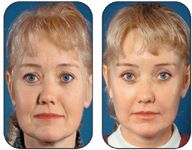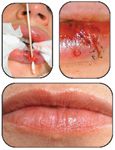- Acne
- Actinic Keratosis
- Aesthetics
- Alopecia
- Atopic Dermatitis
- Buy-and-Bill
- COVID-19
- Case-Based Roundtable
- Chronic Hand Eczema
- Chronic Spontaneous Urticaria
- Drug Watch
- Eczema
- General Dermatology
- Hidradenitis Suppurativa
- Melasma
- NP and PA
- Pediatric Dermatology
- Pigmentary Disorders
- Practice Management
- Precision Medicine and Biologics
- Prurigo Nodularis
- Psoriasis
- Psoriatic Arthritis
- Rare Disease
- Rosacea
- Skin Cancer
- Vitiligo
- Wound Care
Article
Fat injections score high
Author(s):
Toronto - Autologous fat transplantation, long recognized as a simple, effective technique for filling facial wrinkles and frown lines, is fast becoming the most frequently used technique for perioral rejuvenation, according to David A. Sherris, M.D.

Dr. Sherris tells Dermatology Times that collagen and other regularly used injectable fillers present a risk for allergic reactions, while autologous fat implants, which do not involve foreign proteins in their transfer, avoid such complications.

Dr. Sherris says microinjections work very well for small defects, and larger fat and fascia or dermis grafts survive better than large fat grafts alone.

Technique particulars
Dr. Sherris says the fat should be aspirated at low pressure for reinjection, and there are several devices available for harvest and injection.

Dr. Sherris stresses that before the aspirated fat is reintroduced into the target site of the patient, it should be thoroughly cleaned of blood with either a lactated ringer's solution or normal saline solution. This simple but important step can improve the survival of the fat implant.
"The most common perioral fat injection sites where I use this are in the nasolabial folds, using approximately 2 ml to 3 ml per side; at the angles of the mouth and just below at the chin, using about 1 ml per side; and in the lips, injecting approximately 1 ml to 3 ml," he explains.
Newsletter
Like what you’re reading? Subscribe to Dermatology Times for weekly updates on therapies, innovations, and real-world practice tips.











